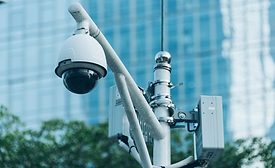- NEWS
- MANAGEMENT
- PHYSICAL
- CYBER
- BLOG
- COLUMNS
- EXCLUSIVES
- SECTORS
- Arenas / Stadiums / Leagues / Entertainment
- Banking/Finance/Insurance
- Construction, Real Estate, Property Management
- Education: K-12
- Education: University
- Government: Federal, State and Local
- Hospitality & Casinos
- Hospitals & Medical Centers
- Infrastructure:Electric,Gas & Water
- Ports: Sea, Land, & Air
- Retail/Restaurants/Convenience
- Transportation/Logistics/Supply Chain/Distribution/ Warehousing
- EVENTS
- MEDIA
- MORE
- EMAG
- SIGN UP!
Home » COVID-19
Articles Tagged with ''COVID-19''
Special Report
Determining the definition of insider risk to your organization is half the battle in mitigating the threat. The other half is more complicated, involving security culture, defined procedures and responses, and a little bit of technology.
Read More
Five areas where centralized security systems are making urban centers safer
A centralized deployment reduces costs and is easier to use, giving public officials better tools for protecting their citizens.
May 25, 2021
The future of AI integration with secured entrances
Integrated solutions using advanced analytics and artificial intelligence (AI) bring expanded functionality and enhanced security to swinging doors and turnstiles
May 11, 2021
COVID-19 Heroes
Sanofi’s North America security team drives COVID-19 response efforts
From the onset of the pandemic, Sanofi’s North America Security Operations & Technology team has worked across the enterprise to provide critical in-house applications and communications to departments and leaders, as well as be on the frontlines of on-location response efforts, ensuring operational continuity, as well as the safety and security of the company’s staff and assets.
May 10, 2021
Sign-up to receive top management & result-driven techniques in the industry.
Join over 20,000+ industry leaders who receive our premium content.
SIGN UP TODAY!Copyright ©2025. All Rights Reserved BNP Media.
Design, CMS, Hosting & Web Development :: ePublishing














